
Have you ever wondered where the enchanted world of Pandora from James Cameron’s legendary film “Avatar” was truly born? Most viewers are convinced it was all the work of computer graphics. In fact, the film’s fantastic landscapes are inspired by a very real place — China’s Zhangjiajie National Forest Park. Its incredible scenery became the foundation for Pandora’s “floating mountains”, which captured the imagination of millions of viewers around the globe.
Zhangjiajie Park, located in Hunan Province, is famed for its giant sandstone pillars that soar hundreds of metres into the sky as if touching the clouds. Their shapes are so unusual it feels as though nature deliberately crafted this landscape for a sci-fi set. Here, amid thick mists and emerald forests, Cameron’s team found inspiration to create the alien world of Pandora — with its astonishing flora, bioluminescent plants and vapour-shrouded peaks that seem beyond reality.
In this article, we’ll dive into where “Avatar” was filmed, why this particular corner of China inspired the director, and which fascinating facts about “Avatar” are worth your attention. You’ll discover the film’s backstory, technical innovations and unique cinematic choices — and, most importantly, how you can visit this fantastic park today and see Pandora’s world with your own eyes.
The magic of Pandora and the reality of Zhangjiajie
When the film “Avatar” first hit the big screen, it instantly reshaped how we think about cinema. Yet few people know that its magic was born not only at Weta Digital or under Cameron’s direction, but also in the heart of China’s wilderness. Dramatic cliffs, dense forests, deep gorges and crystal-clear rivers created a natural backdrop so vivid and extraordinary that the director chose not to rely solely on CGI, but to recreate this world as close to reality as possible.
How filming bridged cinema and the real world
The national park of Zhangjiajie became more than just inspiration — its images were quite literally woven into the film. After “Avatar” was released, one of the sandstone pillars was even officially renamed “Hallelujah Mountain” in honour of Pandora’s floating peaks. Since then, the park has turned into a true pilgrimage site for film fans, photographers and travellers from all over the world.
Today, thousands of visitors come to walk trails that echo scenes from the film, gaze at panoramas seemingly torn from the screen, and feel the harmony of nature that James Cameron conveyed so masterfully. Even if you’re not a sci-fi devotee, the beauty of this place will impress you as much as any cinematic masterpiece.
All this and more — in our detailed guide explaining where “Avatar” was filmed in China and why this destination became the embodiment of another world.
The incredible nature of Zhangjiajie — Pandora on Earth
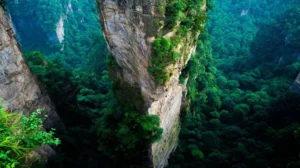
Among China’s rich natural heritage, it is Zhangjiajie National Park where James Cameron’s imagination met reality. The park forms part of the vast Wulingyuan Scenic Area, a UNESCO World Heritage Site. Covering more than 480 square kilometres, the area boasts over three thousand stone pillars ranging from 200 to 400 metres high. They seem to rise straight from the ground, forming a fantastical stone forest that feels almost unreal.
Zhangjiajie’s cliffs are not ordinary mountains. They were shaped from sandstone and quartz millions of years ago through erosion, leaving behind striking vertical columns. Their summits often vanish into the clouds, creating the illusion of “floating islands” reminiscent of those in “Avatar”. That’s why this landscape became the key visual inspiration for Pandora.
What Zhangjiajie looks like
Your first steps into the park feel like entering a world crafted by fantasy artists — except everything around you is real. Lush forests cling to the rocks, deep gorges thread between them, and below you can hear rivers and waterfalls. Morning mists drape the peaks, giving them a mystical look — the time when the scenery most closely resembles Pandora.
- The park is home to over 500 species of rare plants, including relic ginkgo trees and red cedars.
- Dozens of animal species live here, among them rare macaques and flying squirrels.
- The landscape changes with the seasons: lush green in spring, gold and purple hues in autumn, and in winter the rocks are dusted with snow, creating a fairy-tale atmosphere.
“Avatar” and Hallelujah Mountain
After the release of “Avatar”, one of Zhangjiajie’s pillars was given a new name — “Hallelujah Mountain”. It became a symbol of Pandora thanks to its distinctive form — the summit looks separated from its base, as if suspended in the air. Local authorities even put up a sign reading, “Inspiration for the floating mountains from the film ‘Avatar’.” This instantly turned the park into a global tourist phenomenon.
How to see it with your own eyes
Visitors can explore dedicated walking trails and viewing platforms that open vistas straight out of the film. The most popular spot is Yuanjiajie — the viewpoint for the famed “Hallelujah Mountain”. To reach it, take the Bailong Glass Elevator, one of the tallest outdoor lifts in the world, whisking travellers over 300 metres up in just minutes.
The extraordinary nature of Zhangjiajie leaves no one indifferent. Here you can watch clouds slowly wrap the peaks and find the calm and harmony so often missing in modern life. It’s no surprise these landscapes inspired the director to create a mythical world where nature is the lead character.
If you’re planning a trip through China, make sure to include Zhangjiajie National Park in your itinerary. It’s more than a photo spot — it’s a journey into a world that blends reality and fantasy, cinema and nature, people and the universe.
The making of “Avatar” — how a cinematic legend was born

“Avatar” didn’t just redefine sci-fi — it sparked a revolution in world cinema. The idea took shape back in the 1990s, when director James Cameron dreamed of telling a story about a distant world where humanity meets another civilisation. Technology at the time couldn’t deliver the realism he wanted. Only a decade later, after the success of “Titanic”, did he return to that dream — and a new era of cinema began.
Cameron didn’t make just another science-fiction film. He created an entire world — Pandora — inhabited by unique beings with their own ecosystem, culture and language. To make it believable, he combined cutting-edge technology: 3D filming, motion capture, high-resolution image processing and digital facial modelling. “Avatar” laid the groundwork for the modern 3D cinema we know today.
From concept to screen: creating Pandora
The director began developing the project in 1995, writing the initial script. Real production only started in 2005. Cameron founded Lightstorm Entertainment, which, together with Weta Digital (New Zealand), handled the visual effects. The studio had worked on “The Lord of the Rings”, and it delivered astonishingly lifelike faces, movement and expressions for the film’s characters.
- It was the first film to use full “performance capture” to reproduce actors’ emotions in digital form.
- Special head-mounted cameras recorded even the tiniest facial muscle movements.
- Production lasted more than four years, with individual scenes taking weeks of painstaking work.
The language, culture and finer details of Pandora
To make Pandora convincing, Cameron’s team developed a fully fledged tongue — the Na’vi language. Linguist Paul Frommer created more than 500 words, complete with grammar and phonetics. Thanks to this, the actors didn’t just shout invented phrases; they spoke a new language, adding credibility and depth to the alien culture.
Why “Avatar” became a global phenomenon
When the film premiered in 2009, it was an instant sensation. Audiences worldwide were blown away by the scale of the visuals, the beauty of Pandora and the unprecedented emotional intensity on screen. The film grossed over $2.9 billion, becoming the highest-grossing movie in history (a record it held for more than a decade).
Critics called “Avatar” not just a film but “a window into a new reality”. Cameron fused technology with human emotion, telling a story about harmony with nature and spirituality that resonated across cultures. His message — that greed and mindless consumption destroy not only planets but our humanity — is as relevant today as ever.
There are also numerous subtle symbols inspired by real Asian cultures, including Chinese philosophies of harmony between people and nature. That’s why the shoots in China had not only aesthetic but also spiritual meaning — they reflect the film’s deeper idea.
How “Avatar” shaped culture, tourism and the way we see the world
After “Avatar” premiered in 2009, the world changed far beyond cinema. James Cameron’s film became a cultural phenomenon that made millions reconsider nature, humanity and our relationship with the planet. At its heart lies a conflict between a technocratic civilisation and Pandora’s harmonious world — a mirror of Earth’s realities: ecological crisis, overconsumption of resources and the loss of spiritual connection with nature.
Right after the release, interest in Zhangjiajie National Park multiplied. Travellers from around the world wanted to see the “real Pandora” with their own eyes. Chinese media dubbed it the “Avatar effect”, and authorities in Hunan even developed new tourist routes dedicated to the film. The park added signposts with quotes, special viewing platforms and interactive tours that recreate Pandora’s atmosphere.
How “Avatar” boosted ecotourism
The film amplified the global conversation about conservation, and that message resonated with millions. Since its release, interest in ecotourism has surged worldwide. People increasingly choose trips to national parks, protected reserves and places with unique landscapes. Zhangjiajie itself has become a symbol of harmony between people and nature — proof that we can preserve natural treasures without destroying them.
- Chinese authorities strengthened conservation measures in the region as visitor numbers grew.
- New programmes were launched to protect the area’s biodiversity and improve visitor education.
- In the city of Zhangjiajie, a museum was opened, dedicated to the park’s nature and the film “Avatar”.
Philosophy of Pandora reflected in the real world
Pandora’s world — with its spiritual values and deep respect for nature — is more than a scriptwriter’s fantasy. It echoes ideas from Daoism, Buddhism and Chinese folk traditions, where nature is seen as part of universal harmony. Cameron deliberately drew on these motifs to remind us: restoring our spiritual bond with nature is the only way to sustain life on Earth.
It’s no coincidence that Zhangjiajie National Park is now perceived as a place of power. Travellers come not only for the views but to feel a sense of peace and unity with nature. Visits are often called a “journey to harmony” — a symbolic path where everyone can see their own reflection in nature’s beauty.
The “Avatar effect” in contemporary culture
The film’s impact has spread far beyond the industry. Its themes appear in music, art and fashion — and, most importantly, in environmental movements. After the premiere, initiatives aimed at protecting forests and oceans rose significantly. The very term “Avatar effect” has entered academic studies as an example of how cinema can shape public consciousness.
In China, the film is a source of national pride: shooting in Zhangjiajie turned the region into one of the country’s most popular tourist destinations. For travellers seeking inspiration, the park is not just a place to relax but a school of emotion — a reminder that our planet is already a kind of Pandora we must protect.
Surprising facts about “Avatar” that might amaze you
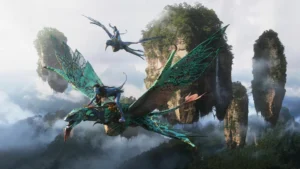
“Avatar” is widely considered one of modern cinema’s greatest achievements. Its creation involved a host of innovations, scientific developments and even linguistic experiments. Here’s a selection of the most intriguing facts to help you see the film in a new light.
Lesser-known details from the production
- The idea dates back to 1994. James Cameron wrote the first draft even before “Titanic”. Studios deemed the project too expensive and technically challenging for the time, so he shelved it for nearly a decade.
- Filming began in 2005 and lasted more than four years. Cameron used his own 3D filming technologies developed specifically for the movie. “Avatar” helped set the standard for modern stereoscopic cinema.
- The Na’vi language took over six months to create. Linguist Paul Frommer devised its grammar, phonetics and more than 500 words. There are even online courses for learning it today.
- State-of-the-art motion-capture made it possible to convey the tiniest facial micro-expressions, bringing genuine emotion to fully CGI characters.
- The film received three Academy Awards in major craft categories — Cinematography, Art Direction and Visual Effects — alongside multiple nominations.
Records and achievements
- $2.9 billion at the box office. “Avatar” became the highest-grossing film in history, surpassing “Titanic” and “Avengers”, a record it held for over a decade.
- More than 60 international awards. The film earned global acclaim — from Hollywood to Tokyo — and became a symbol of technological breakthrough.
- The set became a lab of the future. Cameron pioneered a new standard where actors and CGI existed in a unified space, and the director could “see” the final shot in real time on a special monitor.
- Zhangjiajie featured in the promotional campaign. Chinese travel agencies used the slogan “Visit Pandora on Earth”, underlining the film’s connection to real-world nature.
The film’s philosophy and cultural impact
“Avatar” is not just technological innovation — it’s a philosophical statement. Cameron wanted to remind us how interdependent all forms of life are. His story is a parable about love, responsibility and environmental awareness. Unsurprisingly, environmental organisations grew in number after the film’s release, and ecology gained a renewed voice in popular culture.
Little-known nuggets for devoted fans
- For the banshee flight scenes, the team used simulation seats that mimicked movement in real time — like theme-park rides.
- James Cameron personally sketched many creatures of Pandora, drawing on real Amazonian wildlife and species from Southeast Asia.
- Parts of Pandora’s sets were filmed in New Zealand, but the final vistas are a blend of real footage from China and digital artistry.
- Actors trained with anthropologists to master body language and rituals of the fictional Na’vi culture.
Thanks to such details, “Avatar” became more than a film — it’s a cohesive world where technology, nature and spirituality weave into a mesmerising symphony. Over a decade after its premiere, the movie still inspires, reminding us that cinema’s real magic lies in harmony between humanity and the natural world.
Conclusions: “Avatar”, Zhangjiajie and the power of nature that inspires the world

“Avatar” is more than a visual spectacle — it’s a profound message about our bond with nature. Its world isn’t pure invention; it reflects wonders that already exist on our planet. Zhangjiajie National Park is living proof that Pandora’s beauty has earthly roots. When you see those mist-wrapped pillars, you realise human imagination simply continues what nature began.
What the film offers us today
More than a decade on, “Avatar’s” message remains relevant. The film reminds us that we are part of a vast ecosystem, and our behaviour shapes the planet’s future. Pandora is a metaphor for Earth — a world of marvels that deserves care and respect. That’s why, as we travel the world, it’s vital not only to admire nature’s beauty but to help preserve it for the generations to come.
Travellers who visit Zhangjiajie often say the place changes their outlook. Standing before its monumental cliffs, lush forests, quiet rivers and clouds drifting between the peaks, you understand: no computer graphics can surpass nature’s true harmony. It was this elemental power that inspired Cameron to weave fantasy with spirituality.
Tips for those dreaming of seeing “Pandora” in real life
- The best time to visit is spring or autumn, when the air is clear and the views are at their most striking.
- Wear comfortable shoes: the park’s routes include uphill paths and viewing platforms.
- Don’t miss the Bailong Elevator — the ascent reveals a panorama straight out of “Avatar”.
- Early-morning mist makes for the best photos, lending the landscape a mystical atmosphere.
A journey into harmony
If you want to feel part of Pandora, you don’t need futuristic tech — just set off on a journey into the heart of China. Here in Zhangjiajie, you’ll see fantasy and reality merge into one. And perhaps you’ll grasp the film’s core message: to find harmony within, we must first learn to listen to nature.
“We don’t just observe nature — we are part of it. As long as we remember that, our world will remain alive.” — James Cameron


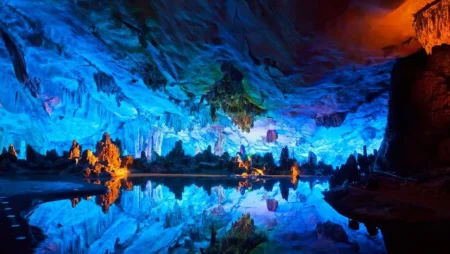


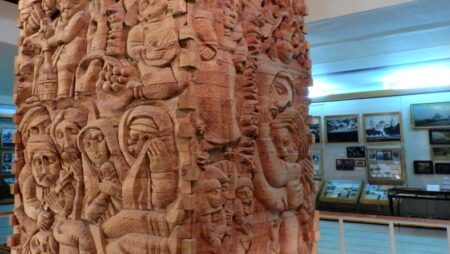


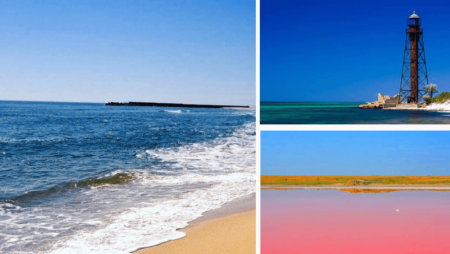

No Comment
You can post first response comment.